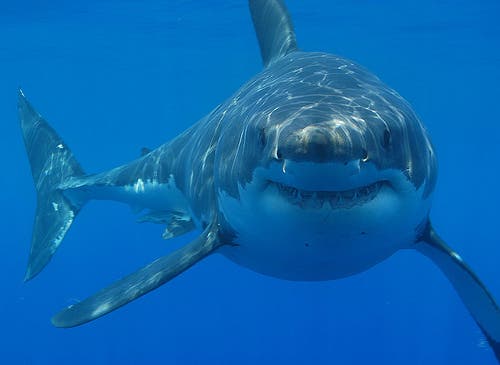At least in one aspect, sharks behave as world class mathematicians – although the cause may be sensibleness more than cleverness.
The behavior associated to both mathematicians and sharks is called the Lévy flight. A Lévy flight is a random walk in which the step-lengths have a probability distribution that is heavy-tailed. In other words, it’s a seemingly complex form of random walk comprising clusters of short step lengths with longer movements between them.
“Lévy flights, named after the French mathematician Paul Lévy, arose in a purely mathematical context in the first half of the last century,” Andy Reynolds of Rothamsted Research told Discovery News. “Sharks and other marine predators use Lévy flight to locate their prey. “
Indeed, sharks aren’t the only marine predators to exhibit this kind of behavior. But why do they do it – and how? That’s what Reynolds set out to answer, and he does have one theory:
“[The technique] can be advantageous when searching for randomly distributed resources because they reduce ‘over sampling’ without the need for cognitive maps and sophisticated navigational abilities.”
That may or may not be true, but it still doesn’t provide any hints as to why they do this. The only theory they came up with was that they follow queues from their environment, such as turbulent waters for example.
“This seemed reasonable,” he said, “because turbulent flows are very complex — the whirls within whirls within whirls like the ones Leonardo da Vinci drew — and within which could be lurking the necessary clues.”
Using mathematical simulations of what is known as “turbulent theory,” they managed to show a really surprising thing: Levy flight movements arise naturally when marine predators encounter patches of relatively strong turbulence.
They ran computer simulations using information observed on sharks, and the results seem to confirm the theory.
“There is no need for sharks to have evolved sophisticated neurological and physiological processes for the execution of the Lévy flights, which are the lead to optimal foraging, ” he said. “Lévy flights will come for free if they just turn away from patches of strong turbulence.”
However, the exact biological mechanism is much more complex than can be currently simulated in models. But the cause may actually be pretty simple: maybe sharks don’t want to be pushed around by turbulence, and this is why they started doing Lévy flights.
“It is sensible to avoid being pushed around by turbulence, ” Reynolds said. “Being pushed around causes damage and disorientation. Better to simply turn away when the going is tough.”










